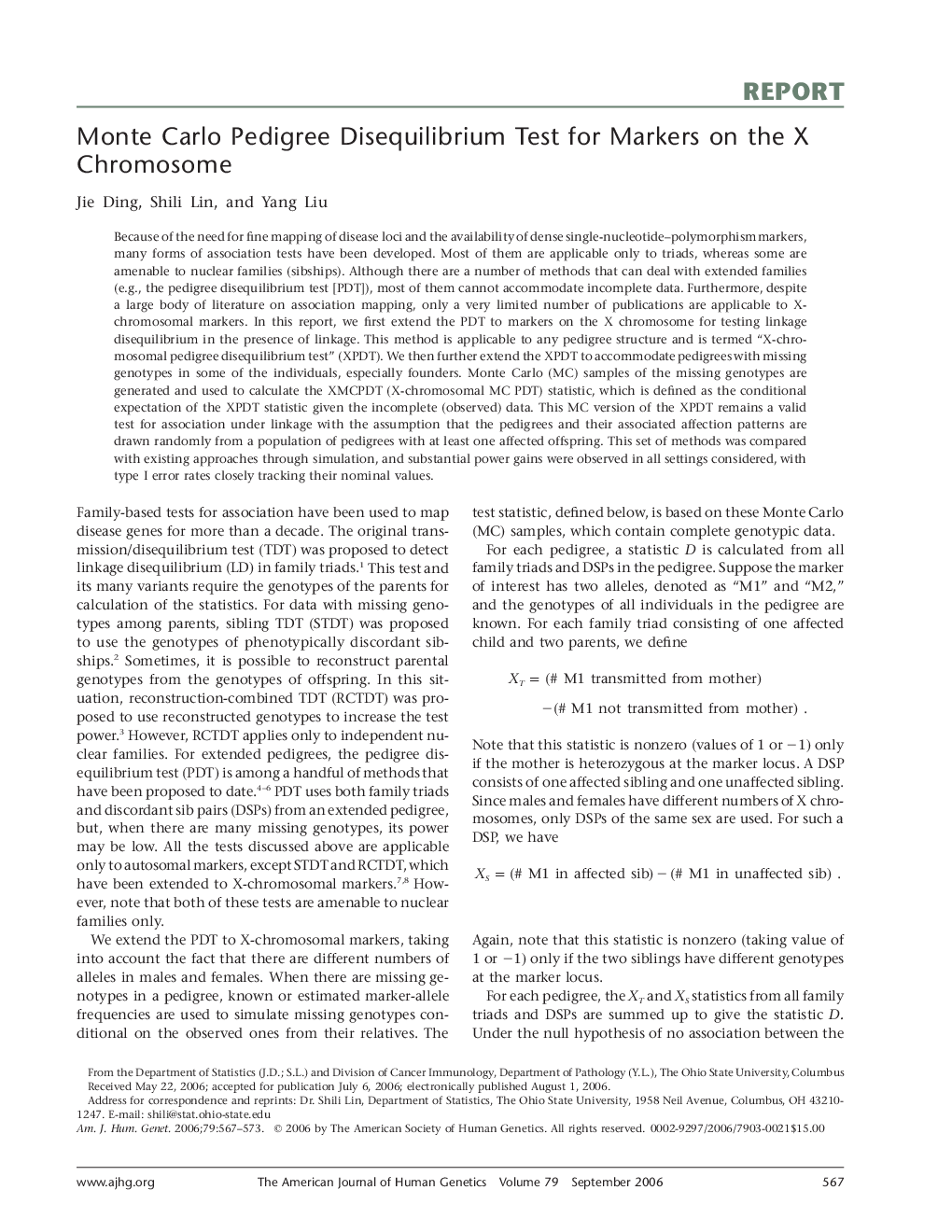| Article ID | Journal | Published Year | Pages | File Type |
|---|---|---|---|---|
| 2812400 | The American Journal of Human Genetics | 2006 | 7 Pages |
Because of the need for fine mapping of disease loci and the availability of dense single-nucleotide–polymorphism markers, many forms of association tests have been developed. Most of them are applicable only to triads, whereas some are amenable to nuclear families (sibships). Although there are a number of methods that can deal with extended families (e.g., the pedigree disequilibrium test [PDT]), most of them cannot accommodate incomplete data. Furthermore, despite a large body of literature on association mapping, only a very limited number of publications are applicable to X-chromosomal markers. In this report, we first extend the PDT to markers on the X chromosome for testing linkage disequilibrium in the presence of linkage. This method is applicable to any pedigree structure and is termed “X-chromosomal pedigree disequilibrium test” (XPDT). We then further extend the XPDT to accommodate pedigrees with missing genotypes in some of the individuals, especially founders. Monte Carlo (MC) samples of the missing genotypes are generated and used to calculate the XMCPDT (X-chromosomal MC PDT) statistic, which is defined as the conditional expectation of the XPDT statistic given the incomplete (observed) data. This MC version of the XPDT remains a valid test for association under linkage with the assumption that the pedigrees and their associated affection patterns are drawn randomly from a population of pedigrees with at least one affected offspring. This set of methods was compared with existing approaches through simulation, and substantial power gains were observed in all settings considered, with type I error rates closely tracking their nominal values.
